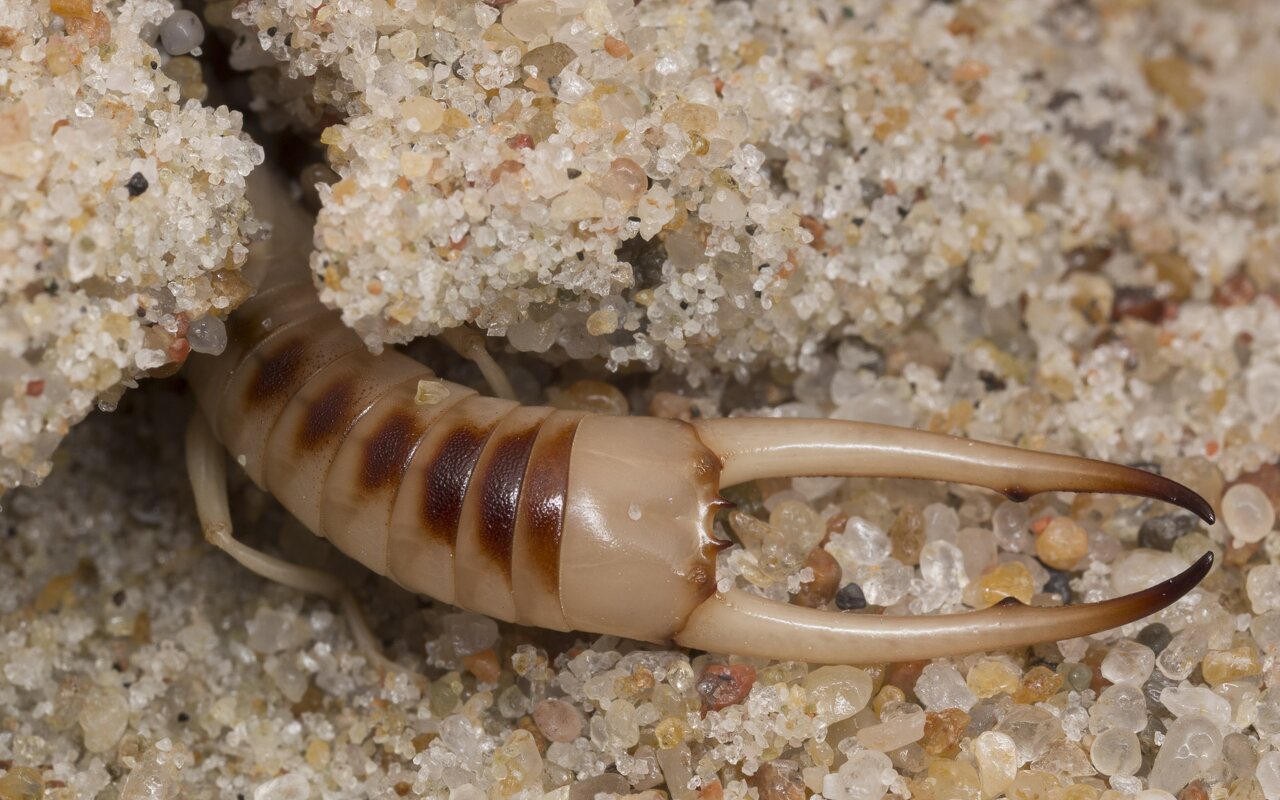
Labidura riparia · smėlinė auslinda
- shore earwig, tawny earwig, riparian earwig, striped earwig
- Sandohrwurm
- smėlinė auslinda
- parastā spīļaste
- obcążnica nadbrzeżna
https://en.wikipedia.org/wiki/Labidura_riparia L. riparia are a cosmopolitan species primarily in tropical to subtropical regions. Body size varies greatly, ranging from 16 mm to 30 mm, with 10 abdominal segments. Males and females differ in forcep size, with males having much larger and stronger curve, while females have smaller, straighter forceps with a slight curve at the end. Earwigs use these forceps to assist in predation, defense, sexual selection, courtship and mating, and wing folding.
L. riparia are a subsocial earwig with complex maternal habits. They are voracious predators, and highly regarded as efficient for pest control in many situations. Repugnitory glands in the earwigs cause them to secrete a foul smelling pheromone to deter predators, which is said to smell like decomposition. L. riparia are generalist predators whose diet consists entirely of insects or scavenged meat. They have a preference to Lepidoptera larvae and insect eggs, but will eat any available insect.
Nests are dug for molting, feeding, and egg laying. A suitable nest is chosen and dug out by the female under a rock or tree bark. Female earwigs are the primary caregivers as they become hostile to males while in their brooding chambers. While the female is laying her eggs she grabs them and cleans them of any fungi or dirt one by one as they are laid. They do this to 60-100 eggs, and once finished they lay over top of the eggs much like a hen. The female continues to groom the eggs and stay guarding them for 10 days until they begin to hatch. At this time the mother goes in search of food for her young, and continues feeding and grooming them until they leave the nest themselves 2–5 days later.
Apie 26 mm ilgio, geltonai rudas. akys juodos. Išvaizda varijuoja. Kosmopolitinė rūšis, aptinkama visame pasaulyje. Ypač dažna atogrąžose, iš kur manoma ir kilo ši rūšis. Randame smėlėtose pakrantėse, kopose, paupių smėlynuose. Gyvena atvirose lengvo, smėlėto grunto buveinėse. Dažnai aptinkama po lentgaliais, kelmais, kopų augalų išpustytomis šaknimis, kur smėlis yra kiek drėgnesnis. Tūno savo išsiraustuose urveliuose. Buvimo vietą žymi smėlio kauburėlis. Juose vasarą krūvelėmis po 60 – 70 deda kiaušinius ir saugo juos bei išsiritusius jauniklius iki pirmo nėrimosi. Minta gyvais ir negyvais vabzdžiais ir kitais gyvūnais. Žiemoja lervos ir suaugėliai giliai įsikasę (iki 2 metrų) smėlyje.
Lietuvoje reta. Aptikta Kuršių nerijoje ir karjeruose Marijampolės, Vilkaviškio, Jonavos rajonuose, Įrašyta į Lietuvos raudonąją knygą.
‥
0 comments
Add a comment
Comments